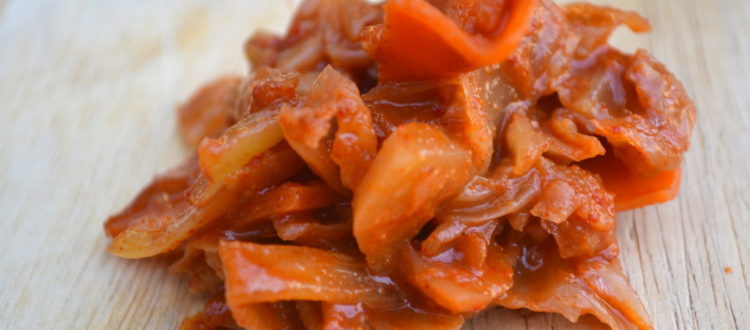Guest Post: Kimchi 101
Total Time2 Hours + Fermenting
Yield :6, 12oz Jars
Ingredients
- 2 heads cabbage, shredded (Napa cabbage works well)
- 1 cup salt
- ¼ cup rice flour
- ¼ cup sugar
- 1 ½ cups water
- 1 inch piece ginger, peeled
- ½ cup garlic cloves (approx. 1 head)
- ½ white onion
- ½ cup fish sauce
- 4 cups sliced daikon
- 4 cups sliced carrot
- 4 cups sliced scallion
- 1 cup chili powder
- 1/3 cup dried shrimp




